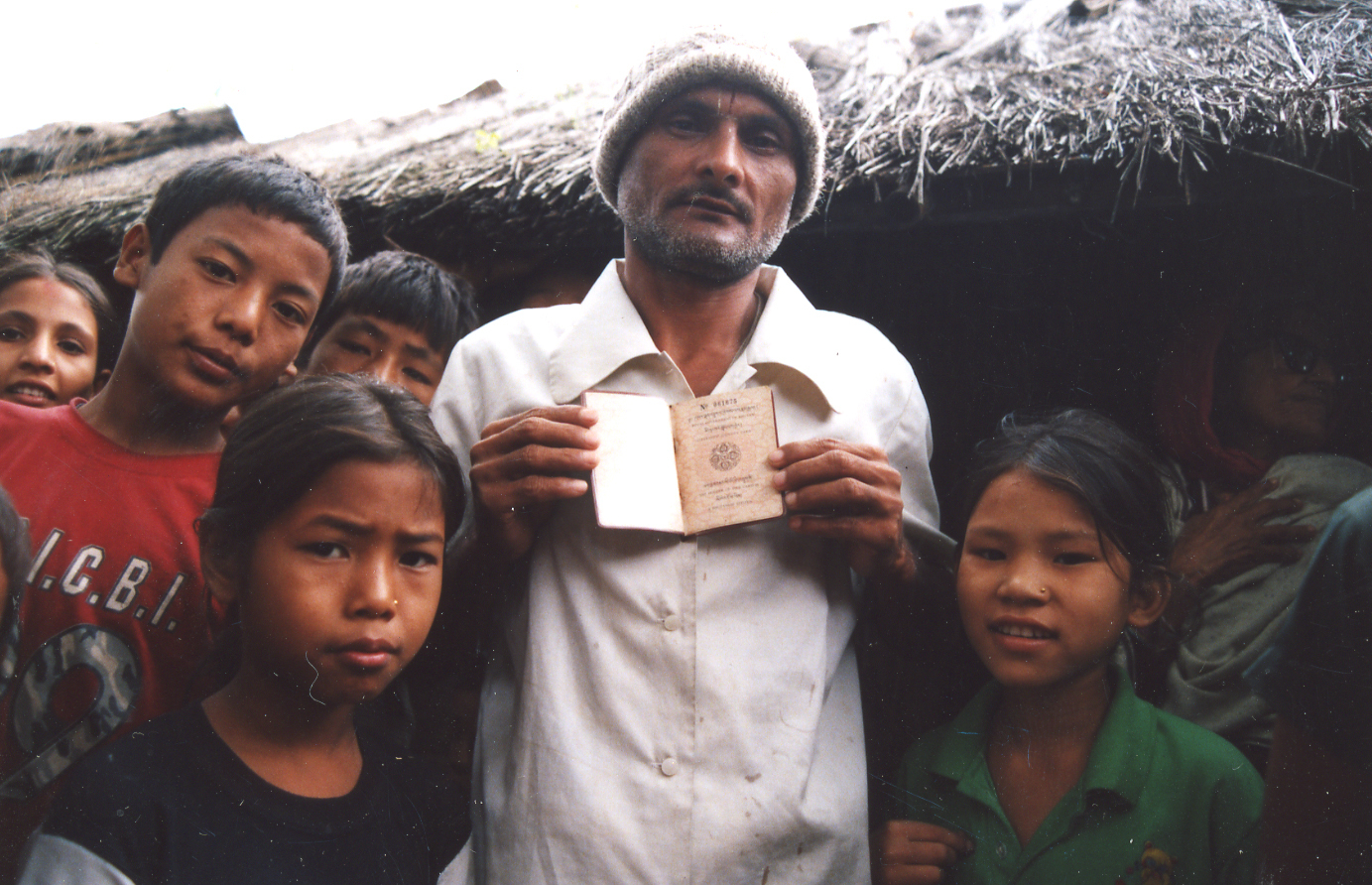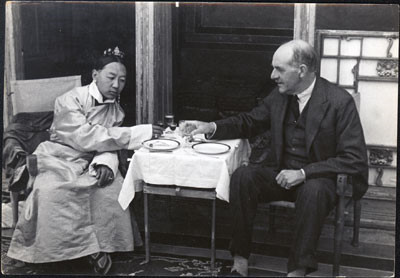|
Bhutanese Refugee
Bhutanese refugees are Lhotshampas ("southerners"), a group of Nepali language-speaking Bhutanese people. These refugees registered in refugee camps in eastern Nepal during the 1990s as Bhutanese citizens who fled or were deported from Bhutan during the protest against the Bhutanese government by some of the Lhotshampas demanding their own choice of leader that demanded a king and land that was already under the jurisdiction of the royal in Bhutan. As Nepal and Bhutan have yet to implement an agreement on repatriation, most Bhutanese refugees have since resettled in North America, Oceania and Europe under the auspices of the Office of the United Nations High Commissioner for Refugees. Many Lhotshampa have also migrated to areas of West Bengal and Assam in India independently of the UNHCR. Historical background The earliest surviving records of Bhutan's history show that Tibetan influence already existed from the 6th century. King Songtsen Gampo, who ruled Tibet from 627 to 649, ... [...More Info...] [...Related Items...] OR: [Wikipedia] [Google] [Baidu] |
Shabdrung Ngawang Namgyal
Ngawang Namgyal (; alternate spellings include ''Zhabdrung Ngawang Namgyel;'' 1594–1651), known colloquially as ''The Bearded Lama'', was a Tibetan Buddhist Drukpa Kagyu school Rinpoche, and the unifier of Bhutan as a nation-state. He was later granted the honorific title Zhabdrung Rinpoche, approximately "at whose feet one submits". In addition to unifying the various warring fiefdoms for the first time in the 1630s, he also sought to create a distinct Bhutanese cultural identity separate from the Tibetan culture from which it was derived. Birth and enthronement at Ralung ''Zhabdrung'' Ngawang Namgyal was born at Ralung () Monastery, Tibet as the son of the Drukpa Kagyu lineage-holder Mipham Tenpa'i Nyima (, 1567–1619), and Sönam Pelgyi Butri (), daughter of the local king of Kyishö () in Tibet. On his father's side, Ngawang Namgyal descended from the family line of Tsangpa Gyare (1161–1211), the founder of the Drukpa Lineage. In his youth, Ngawang Namgyal was ent ... [...More Info...] [...Related Items...] OR: [Wikipedia] [Google] [Baidu] |
Bhutanese Citizenship Act 1958
The Bhutanese Citizenship Act of 1958, officially the Nationality Law of Bhutan, 1958, is a decree by the Druk Gyalpo King Jigme Dorji Wangchuck, recognizing the definition of a Bhutanese citizen. The Act was amended in 1977 and then superseded by the Citizenship Act of 1985. Provisions of the 1958 Act The preamble and first two articles of the Act describe its promulgation as a series of changes to the previous nationality law. It also states that King Jigme Dorji Wangchuck promulgated the Act on the advice of royal advisers, the Bhutanese people, and the monastic body. They also define its name and jurisdiction – the Kingdom of Bhutan. Bona fide Bhutanese nationals The Act's third article provides Bhutanese citizenship to residents whose fathers are Bhutanese nationals, and to children born anywhere after the enactment of the Act whose fathers are Bhutanese nationals at the time of the child's birth. This provision is an example of a patrilineal ''jus sanguinis'', or blood-bas ... [...More Info...] [...Related Items...] OR: [Wikipedia] [Google] [Baidu] |
Jigme Wangchuck
Jigme Wangchuck (, ; 1905 – 30 March 1952) was the (Dzongkha འབྲུག་རྒྱལ་གཉིས་པ) 2nd Druk Gyalpo or king of Bhutan from 26 August 1926, until his death. He pursued legal and infrastructural reform during his reign. Bhutan continued to maintain almost complete isolation from the outside world during this period; its only foreign relations were with the British Raj in India, under which Bhutan was a protected state. He was succeeded by his son, Jigme Dorji Wangchuck. Early life Jigme Wangchuck was born in 1905, at the Thinley Rabten Palace in Wangdue Phodrang District. He received his education at Wangduechhoeling Palace, where he learned English and Hindi and received a religious education.Lham Dorji, p. 30 As the first son of Ugyen Wangchuck, Jigme was expected to succeed his father; accordingly, he was given the title Penlop of Trongsa in 1923.Lham Dorji, p. 31 Reign Jigme Wangchuck ascended to the throne in 1926, after the death of Ugyen ... [...More Info...] [...Related Items...] OR: [Wikipedia] [Google] [Baidu] |
National Assembly Of Bhutan
The National Assembly is the lower house of the bicameral Parliament of Bhutan, and it's responsible for enacting laws, representing the people, and overseeing the government. It consists of 47 members elected from 47 constituencies across the road country. Under the 2008 Constitution, Article 12, section 1, the National Assembly consists of a maximum of 55 members directly elected by the citizens of constituencies within each ''Dzongkhag'' (District). Under this single-winner voting system, each constituency is represented by a single National Assembly member; each of the 20 ''Dzongkhags'' must be represented by between 2–7 members. Constituencies are reapportioned every 10 years (Art. 12, § 2). The National Assembly meets at least twice a year (Art. 12, § 5), and elects a Speaker and Deputy Speaker from among its members (Art. 12, § 3). Members and candidates are allowed to hold political party affiliation. The 2013 National Assembly election resulted in large increas ... [...More Info...] [...Related Items...] OR: [Wikipedia] [Google] [Baidu] |
India
India, officially the Republic of India, is a country in South Asia. It is the List of countries and dependencies by area, seventh-largest country by area; the List of countries by population (United Nations), most populous country since 2023; and, since its independence in 1947, the world's most populous democracy. Bounded by the Indian Ocean on the south, the Arabian Sea on the southwest, and the Bay of Bengal on the southeast, it shares land borders with Pakistan to the west; China, Nepal, and Bhutan to the north; and Bangladesh and Myanmar to the east. In the Indian Ocean, India is near Sri Lanka and the Maldives; its Andaman and Nicobar Islands share a maritime border with Thailand, Myanmar, and Indonesia. Modern humans arrived on the Indian subcontinent from Africa no later than 55,000 years ago., "Y-Chromosome and Mt-DNA data support the colonization of South Asia by modern humans originating in Africa. ... Coalescence dates for most non-European populations averag ... [...More Info...] [...Related Items...] OR: [Wikipedia] [Google] [Baidu] |
Bhutan State Congress
Bhutan, officially the Kingdom of Bhutan, is a landlocked country in South Asia, in the Eastern Himalayas between China to the north and northwest and India to the south and southeast. With a population of over 727,145 and a territory of , Bhutan ranks 133rd in land area and 160th in population. Bhutan is a democratic constitutional monarchy with a King as the head of state and a prime minister as the head of government. The Je Khenpo is the head of the state religion, Vajrayana Buddhism. The Himalayan mountains in the north rise from the country's lush subtropical plains in the south. In the Bhutanese Himalayas, there are peaks higher than above sea level. Gangkhar Puensum is Bhutan's highest peak and is the highest unclimbed mountain in the world. The wildlife of Bhutan is notable for its diversity, including the Himalayan takin and golden langur. The capital and largest city is Thimphu, with close to 15% of the population. Bhutan and neighbouring Tibet experienc ... [...More Info...] [...Related Items...] OR: [Wikipedia] [Google] [Baidu] |
Sonam Topgay Dorji
Sir Raja Sonam Topgay Dorji CIE (; ; 1896–1953), also called Tobgay, was a member of the Dorji family and Bhutanese politician who served between 1917 and 1952 in the Royal Government under the First and Second Kings of Bhutan. During this period, Topgay Dorji officially held the posts of ''Gongzim'' (Chief Minister), ''Deb Zimpon'' (Chief Secretary), and Trade Agent to the Government of Bhutan. As such, Topgay Dorji was responsible for fostering Anglo-Bhutanese relations, and later, Bhutan–India relations. Topgay's ties with the west and modernist political factions contributed significantly to the modern political landscape and modernization of Bhutan. Topgay Dorji inherited his positions from his father, ''Kazi'' Ugyen Dorji, who was instrumental in advising Ugyen Wangchuck before and after he became the First King of Bhutan. Topgay Dorji lived, worked, and died at Bhutan House, the Dorji's estate in Kalimpong, India, the traditional administrative center of southern ... [...More Info...] [...Related Items...] OR: [Wikipedia] [Google] [Baidu] |
Basil Gould
Sir Basil John Gould, CMG, CIE (29 December 1883 – 27 December 1956) was a British Political Officer in Sikkim, Bhutan and Tibet from 1935 to 1945. Biography Known as "B.J.", Gould was born in Worcester Park, Surrey, to Charles and Mary Ellen Gould. He was educated at Winchester College and Oxford University. He joined the Indian Civil Service in 1907."Obituary: Sir Basil Gould, C. M. G., C. I. E.", F. M. Bailey, ''The Geographical Journal'', Vol. 123, No. 2 (Jun. 1957), pp. 280–281. Gould was a British Trade Agent in Gyantse, Tibet from 1912 to 1913. In 1912, the 13th Dalai Lama asked that some "energetic and clever sons of respectable families" should be given "world-class educations at Oxford College, London". The Indian government decided that Gould, who was about to go on leave back to England, should guide the four young boys (known as the " Four Rugby Boys") on their journey to the United Kingdom and assist them during their first few weeks in England in Apri ... [...More Info...] [...Related Items...] OR: [Wikipedia] [Google] [Baidu] |
Tsirang
Tsirang District (; ; previously Chirang) is one of the 20 dzongkhags (districts) of Bhutan. The administrative center of the district is Damphu. Tsirang is noted for its gentle slopes and mild climates. The dzongkhag is also noted for its rich biodiversity; however, it is one of the few dzongkhags without a protected area. One of Bhutan's longest rivers, the Punatsang Chhu or Sankosh river flows through the district. It is the main district where the Lhotshampa resides. It has many beautiful places such as Rigsum Pemai Dumra, Pemachoeling Heritage Forest, Tsirang Namgyel Chholing Dratshang, and Nye. Languages The dominant language in Tsirang is Nepali, but it can be partially different from those spoken in Nepal, spoken by the heterogeneous Lhotshampa like Bhujel, Magar, Tamang, Gurung, Limbu, Rai, etc. In the north of Tsirang, Dzongkha, the national language, is also spoken. Administrative divisions Tsirang District is divided into twelve village blocks (or '' gew ... [...More Info...] [...Related Items...] OR: [Wikipedia] [Google] [Baidu] |
Kalimpong
Kalimpong is a town and the headquarters of an eponymous district in the Indian state of West Bengal. It is located at an average elevation of . The town is the headquarters of the Kalimpong district. The region comes under Gorkhaland Territorial Administration which is an autonomous governing body within the state of West Bengal. The Indian Army's 27 Mountain Division is located on the outskirts of the city. Kalimpong is known for its educational institutions, many of which were established during the British colonial period. It used to be a gateway in the trade between Tibet and India before China's annexation of Tibet and the Sino-Indian War. Kalimpong and neighbouring Darjeeling were major centres calling for a separate Gorkhaland state in the 1980s, and more recently in 2010. The municipality sits on a ridge overlooking the Teesta River and is a tourist destination owing to its temperate climate, natural environment and proximity to popular tourist locations in the ... [...More Info...] [...Related Items...] OR: [Wikipedia] [Google] [Baidu] |



